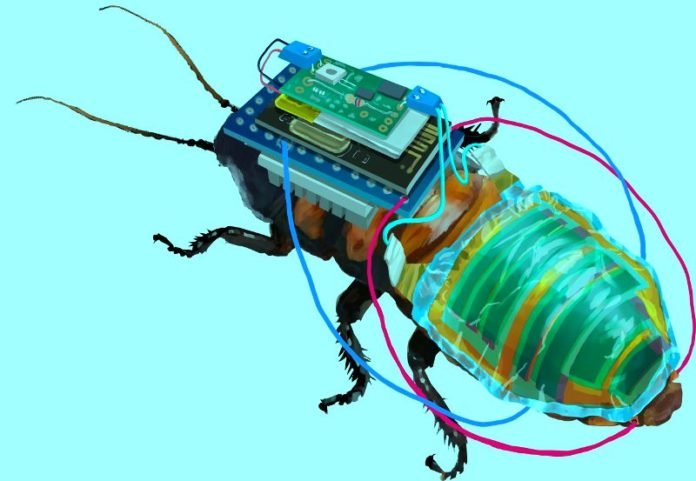Scientists have developed cyborg insects to be used for applications such as urban search and rescue, with body-mounted energy-harvesting devices. These unique machines could be used for monitoring the environment, tracking movements, and coordinating rescue and search missions during natural disasters.
The details have been published in the journal npj Flexible Electronics, in which scientists have demonstrated its feasibility by displaying the recharging wireless locomotion control of cyborg insects.
“Advancements in electronics have resulted in the increasing integration of organisms and machines. The miniaturisation and fabrication of low-power consumption semiconducting chips through micro/nanofabrication have resulted in small-organism cyborgs,” they said in the paper.
Led by scientists from the Center for Emergent Matter Science, RIKEN in Japan, the team developed a cockroach backpack that was wired into the organism’s nervous system with a power output 50 times higher than previous devices. The cyborg cockroach has been built with an ultrathin solar cell, that does not affect the movement of the insect.
They used a combination of ultrathin film electronics and an adhesivenonadhesive interleaving structure to perform basic insect motion. “The integration of thin and soft electronics into organisms can improve their ease of use in numerous applications. Stretchable electronics enable the integration of devices on three-dimensional curved surfaces with movable joints,” the paper read.
Scientists designed the cells to be solar powered and rechargeable attaching a battery and stimulation module to the cockroach’s thorax. They then ensured that the solar cell module would adhere to the insects’ abdomen, which was challenging since it could affect its movement.
To ensure that the insect movement is not hit, scientists tested several thin electronic films and observed how they affected the movement of the cockroach. “The effectiveness of the thin-film attachment strategy was quantified by measuring the time required to traverse an obstacle,” they said.
They ended up with a film that is 17 times thinner than human hair. The team then demonstrated how they could move the cockroach right, and left and steer it ahead using wireless signals, that were attached to its nervous system. “The designed output signals for the stimulation were wirelessly controlled using a module with a negligible signal delay,” the paper revealed.
Scientists said that the stimulation signals were wirelessly transmitted for 2.1minutes through the charged battery. During this period, locomotion control was attempted multiple times, which confirmed that the wireless control was successfully performed repeatedly.
While they have achieved movement, they are conducting more research to add further functionality to the cyborg roach.
Read more Health News

